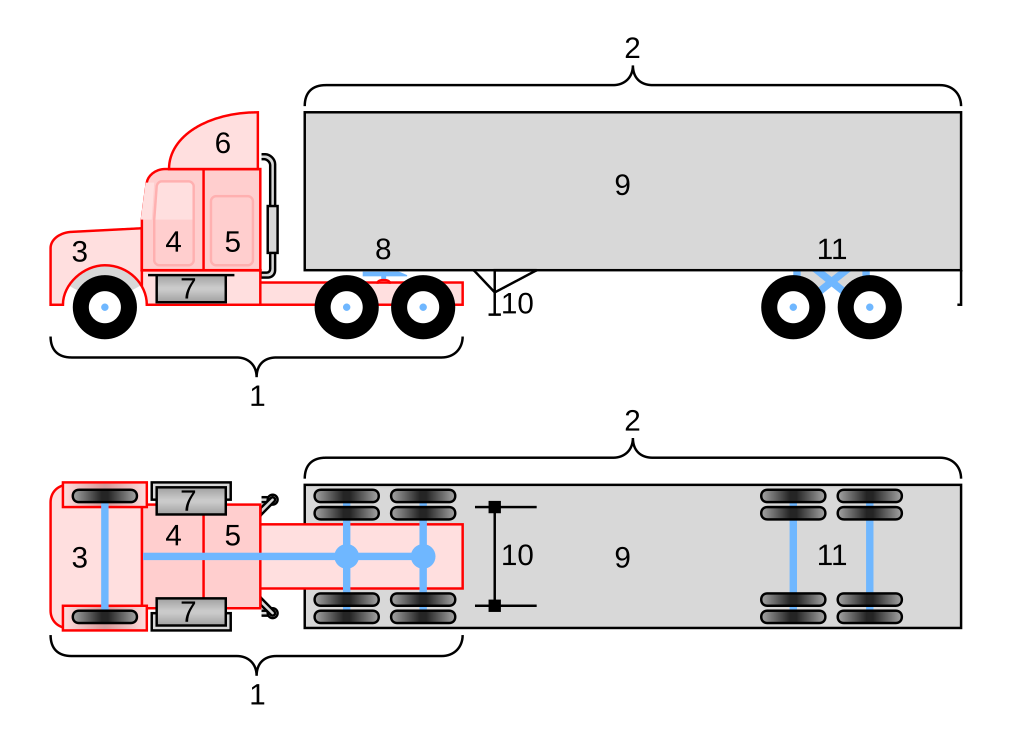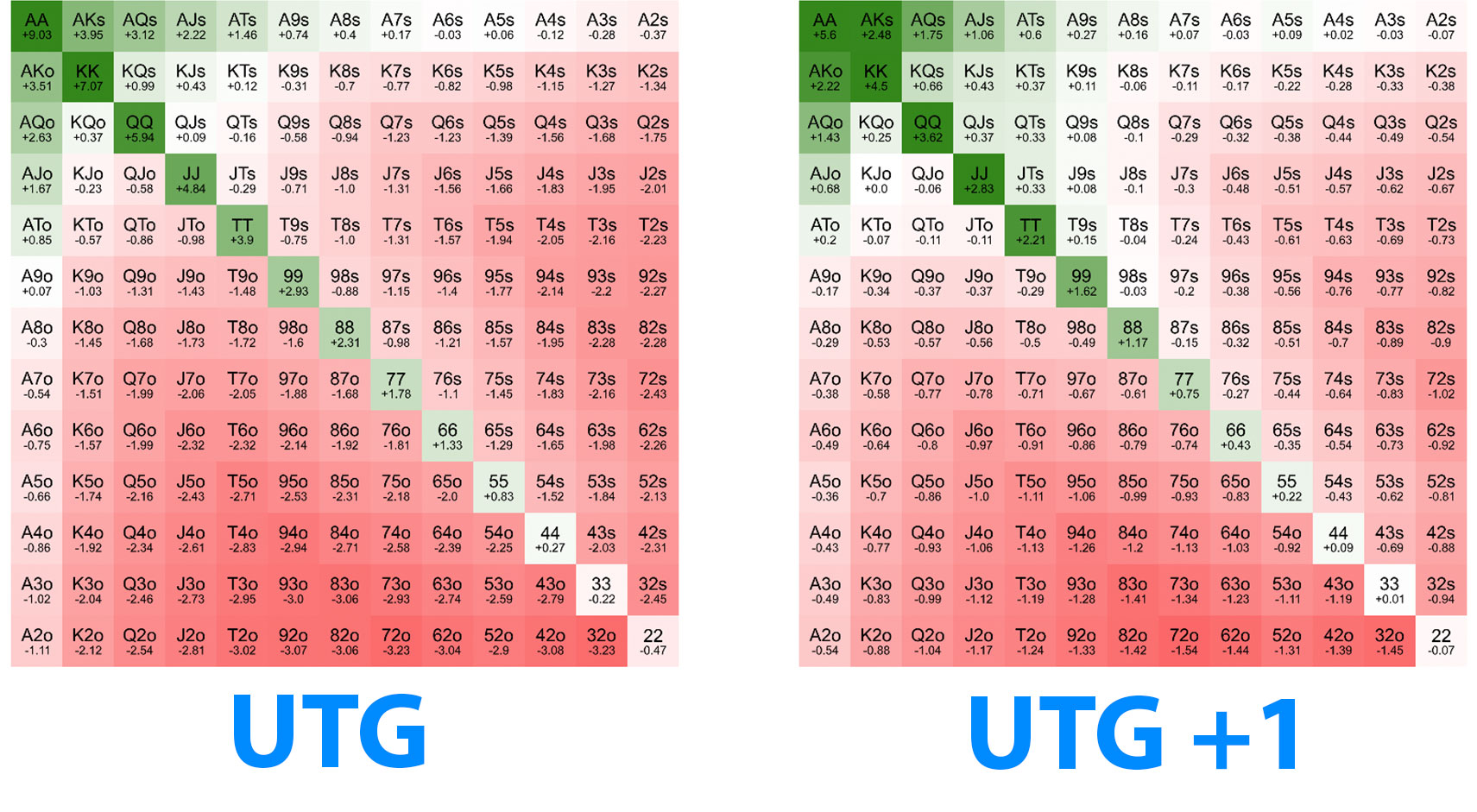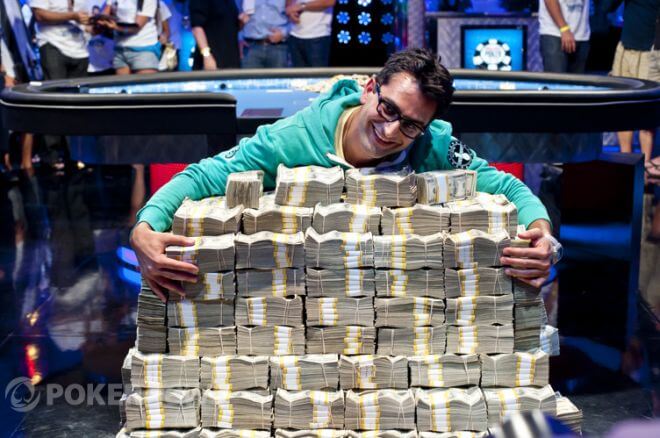Short Stack Poker Chart
Most cash game players tend to be drawn to 100BB full-stacked play, but this is not the only option if you want to be profitable cash game player. At the ZOOM tables the minimum buy in is 50BB. At regular cash tables we have the option of buying in for 40BB, and if you desire even shorter play, PokerStars offers CAP tables available with a maximum effective stack of 20BB.
Advantages of Short Stacking
The most important consideration is your stack depth since these push fold ranges assume the effective stack in play. For example, if the player in the BB is very short-stacked, he will be calling a lot, so your fold equity will diminish, meaning you should play tighter ranges and mostly shove value hands. Short stack is defined by the number of big blinds your stack represents. For an online tourney that features 5,000 starting chips and an opening BB of 20, each player has 250 BBs to start with.
I have already presented a set of reason as to why full stacked play is attractive to many players in this article. My purpose here, is not to convince you that short-stacking is a better objective choice, but to suggest a few reasons why you might be more suited to it as a player so that you can consider all of your options when choosing your main game.
Firstly, short-stacking simplifies the game tree enormously. This allows you to become a strong short-stacker much faster than you could master 100BB play.
Secondly, players are not used to facing short-stacking regulars. In other words, most of the players who use a shorter stack are weaker players who mishandle a 40 or 50BB stack, treating it as though it is much larger. As a result, regs will treat you like a weaker player at first and may misplay hands significantly. This advantage only exists in games where people normally play full-stacked. Hopping on to a CAP table will not surprise anyone since everybody there has chosen to play with a shorter stack. Consequently, solid short-stacked play can be a strong surprise weapon.
All poker players have been there. Bleeding chips with every orbit while staring at junk hand after junk hand. Here on PokerNews you find free preflop poker charts for five. Short Stack Poker is NOTHING like Bingo! This is 1 of the 150+ Classes from PokerCoaching Premium. Check out to learn more!
Finally, playing with a short stack reduces your variance because you avoid 120BB coin flips and 200BB deep set over set scenarios. No one can be too unhappy about this.
Setting up 40BB Play at Regular Tables
I have chosen to focus on 40BB stacks today as they are the standard choice for players who do not wish to play Zoom. In order to run a 40BB stack make sure that you do the following:
- Set your auto buy-in at cash tables to 40BB.
- Set auto rebuy to come into effect when you fall below your starting stack and to top you up to your starting stack.
- Make sure to leave a table when your stack reaches around 60BB and practice your skills in this 40-60BB vicinity.
Full Stack Poker Facebook
With that out of the way let’s talk a little strategy about how to wield the 40BB short-stack in cash games.
3-Betting at 40BB
The idea here is to make life awkward for our 100BB engrained opponents. Let’s imagine that one of them opens the BU to 2.5BB (the most common modern BU raise size) and we decide we would like to 3-Bet some hand; it does not matter what. Our goal here is to achieve three things:
- Deny Villain the option of 4-betting and then folding to a shove.
- Deny Villain an effective all-in raise that gives him a good risk to reward ratio.
- Deny Villain the option of calling profitably with weaker implied odds geared hands.
At 40BB, no size will make the first option viable for Villain so we can focus on the other two. If we were to raise to 10BB, it would be too easy for Villain to toss in the other 30BB and need very little fold equity from us for some weaker shoves to become quite profitable. If we raised to 5BB he would be able to call almost anything very profitably. The correct 3-Bet size for us here, then, is around 7BB. This will strike a nice balance between preventing Villain calling with poor hands – since there will not be enough left behind to compensate him when he gets lucky – and limiting the effectiveness of his shove – since he will be risking 37.5BB to win 10BB; a less than stellar risk to reward ratio.
Opening Ranges and Sizing
At 40BB stack-depth, when opening the pot from, let’s say the HJ (MP in a 6-max game), we are going to favour bigger cards more and avoid implied odds type hands such as small pocket pairs that need a bigger pay out than the stacks allow to become profitable. A hand like AJo, for example, goes up in value because off-suit big cards flop the best hand quite often and do very well when a small to medium amount of money goes in post-flop. When 100BB deep, the disadvantage to a hand like AJo is how easily it can be dominated and lose a very big put due to what is known as its reverse implied odds – the idea that if a lot of money goes in our one pair is quite likely to lose vs. most opponents. As a result of implied odds hand becoming worse, and big cards becoming stronger at 40BB, I would cut hands such as [22-55, A2-A5s, 76s 87s 98s] from my opening range here, replacing them with hands I would fold at 100BB stack depth such as: [QJo, A9o, KTo, JTo]. Flush and set potential is simply less important at 40BB stack depth, while hitting the flop as often as possible in a reasonably strong way becomes the main goal.
With respect to sizing, our job is similar to when we were the 3-bettor. We are trying to prevent Villain from having a comfortable re-raise size against our open. We noted previously that when he opened to 2.5BB, we had a comfortable 3-Bet to 7BB that met our aims – so we shall avoid that sizing as the opener. If we use a 3.5BB raise instead, Villain will really struggle to find a good 3-Bet size. 7.5-8BB is very easy for us to call with almost anything we have opened, while anything that approaches 10BB will give us a very juicy risk to reward ratio on a shove. A size to really cause our opponents bother at 40BB stacks then is a larger one of 3.5BB. This will practically force players to shove or fold against us which makes our life very simple. Many 100BB players will shove too tight against our opens, increasing our EV in steal spots.
Post-Flop
Our mission here is to stack off with plenty of good one pair hands and apply pressure with bluffs when we hold cards that make it less likely for Villain to hold a strong one pair. Sets, straights and flushes are overkill on most boards. We are not waiting around for these hands to value bet three times. Again, we should become very aware of the stack to pot ratio that our short stack creates and expect to gain an edge by sizing bets and raises much more proficiently than our opponents, who are not used to doing battle in this shallower arena.

Short Stack Poker Strategy

Conclusion
Try it out and see what you think. Short-stacking is definitely not for everybody, but for those who like it, it provides a nice way of unsettling the competition. Short stackers are somewhat of a dying breed and so becoming one is good way to put a cat amongst the pigeons.
Deep Stacks Poker

Short Stack Poker Chart Printable
Join us on our Discord channel.